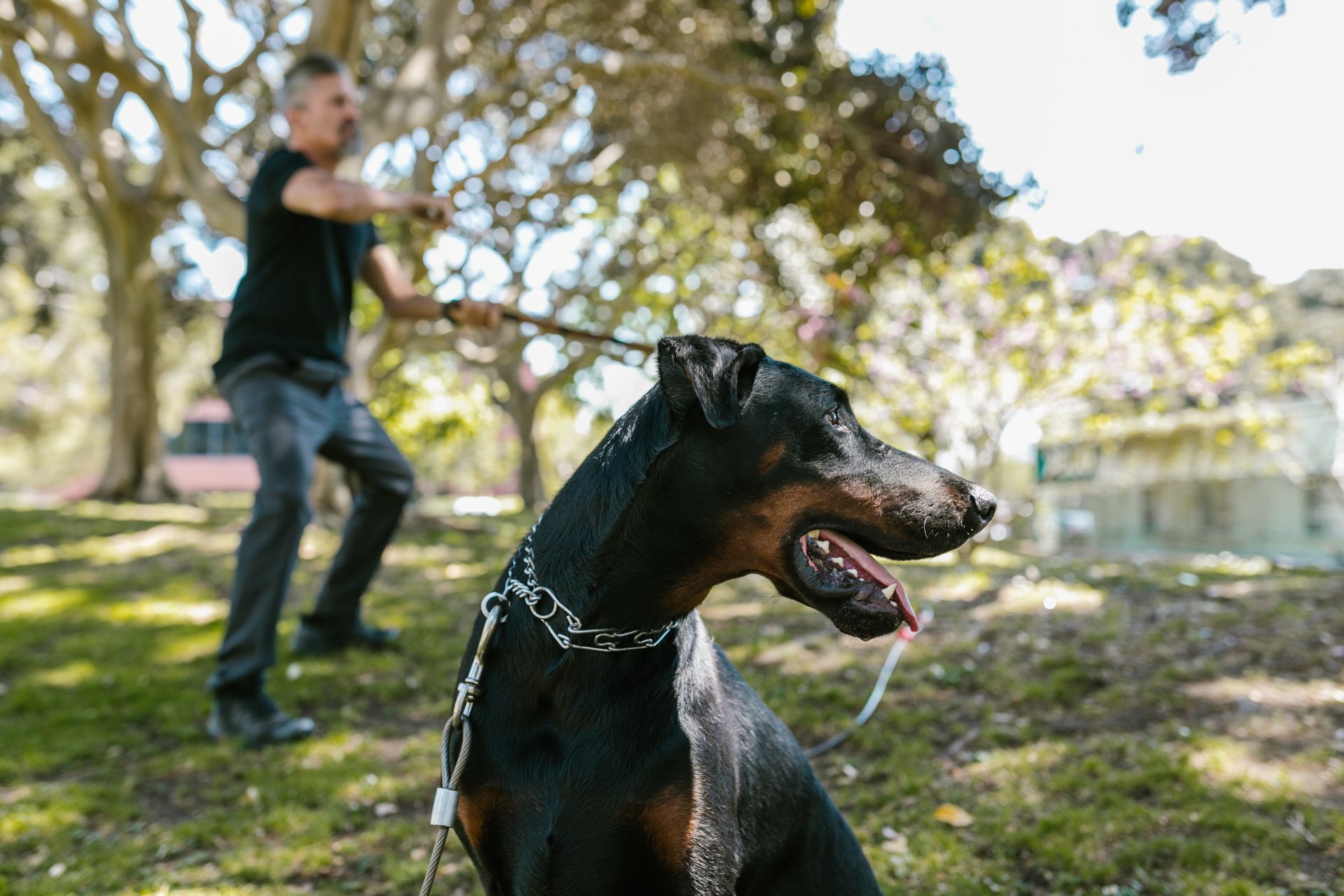Deafness in dogs is a condition that affects canines of all breeds and ages, often going unnoticed until significant hearing loss has occurred. Understanding canine deafness is crucial for pet owners and veterinarians alike, as early detection can lead to better management and improved quality of life for our furry companions. Deafness in dogs can be congenital, stemming from genetic factors present at birth, or acquired due to infections, injuries, or the natural aging process. Recognizing the signs—such as unresponsiveness to calls, unusual barking patterns, or increased startle responses—is the first step in addressing the issue. This article explores the causes, symptoms, and available interventions for deafness in dogs, providing evidence-based insights to help you navigate this challenging condition with confidence and compassion.
September marks Deaf Dog Awareness Month. This is clearly an important topic throughout the year, and we are always delighted to help raise awareness about it. According to the AKC website, around 5% to 10% of our canine companions are deaf. That means there are many puppies out there whose ears aren’t operating properly! Continue reading for more information on deafness in dogs from a Rancho Santa Fe, CA veterinarian.
What Should I Do If I Think My Dog Might Be Deaf?
If you know or suspect that your dog has lost his hearing, schedule an appointment with your Mira Mesa, San Diego, CA veterinarian to have Fido tested. In the interim, you may test him out at home. Wait till he wakes up and then stand behind him. Set off a noisemaker, such as a squeaky toy or an alarm, and see if he responds.
This is, of course, a very informal test. Your veterinarian will need to run more tests, like as Baer testing, to get an official diagnosis.
Is Canine Deafness Always Permanent?
This will depend on the dog and the reason for the hearing loss. In some circumstances, wax buildup might cause temporary deafness. Most of the time, the condition is permanent.
Are Certain Breeds Prone To Deafness?
Breed does play a role, as it is closely linked to Fido’s DNA, and hence to any inherited diseases that may be present. While any dog can lose their hearing, certain breeds are more susceptible than others. Some examples include the Akita, English Setter, Old English Sheepdog, Papillon, Doberman, Pekingese, American Eskimo Dog, Chow Chow, and Pit Bull.
What Causes Deafness In Dogs?
Deafness in dogs is often attributed to various conditions, many of which are inherited, linking directly to a dog’s genetic makeup. Cochleosaccular deafness, a common hereditary hearing loss, frequently affects puppies sporting piebald, merle, or white coats coupled with blue eyes. Another significant type, neuroepithelial deafness, stems from the loss or absence of cochlear hair cells—tiny sensory hairs within the ears. This particular form of deafness can typically be identified in puppies at an early age.
Of course, age is another important consideration. It is common for puppies to lose their hearing as they become older.
Infections, traumas, medicines, tumors, brain lesions, and endocrine abnormalities are some more prevalent reasons for canine hearing loss.
Caring for a Deaf Dog
What if your dog is deaf? Certain conditions, such as infections, may be treatable. For most dogs, however, it is a one-way street. There is some good news here, however. In many ways, caring for a deaf dog is similar to caring for a regular puppy. You’ll only need to make a few changes to Fido’s care regimen.
Here’s some suggestions:
Safety: Because your dog will be unable to hear sounds like automobile horns, brakes, and shouting, you will need to take extra precautions with him. If you have a yard, ensure there is a solid fence that your pet cannot climb over, under, or through. A self-latching gate is the finest option for access and exit. You should also be cautious when walking your dog. Consider connecting a double leash to Fido’s harness for added security.
Fair Warning: As previously said, many deaf dogs dislike being crept up on. Before approaching your dog, stamp your foot to alert him to your presence. If you need to rouse Fido, try placing a treat under his nose. Man’s Best Friend enjoys breakfast in bed! (Actually dogs like food any time and any place, but that’s beside the point.)
Communicating With Others: Inform youngsters and guests on the dos and don’ts of interacting with your canine companion. If you have visitors coming over, let them know ahead of time that your pet cannot hear and should not be surprised or approached covertly. You could also get Fido an adorable vest that reads ‘I can’t hear’ or something similar.
Training: Our canine companions are extremely intelligent, and can learn to respond to hand signals rather than spoken orders. You may need to hire a professional trainer, but the investment will be worthwhile in the long term. You may also wish to teach Fido to come when you wave a flashlight or point a laser pointer.
Accessories: Consider putting a small bell on your dog’s collar. This will allow you to always be aware of his location, as he won’t hear you calling him. A light-up collar can be useful at night. Your Poway, San Diego, CA veterinarian will be able to provide additional information and recommendations for caring for your canine companion.
What Are the Telltale Signs of Deafness In Dogs?
Fido cannot tell you if his fuzzy ears are in poor shape, but there are certain telltale symptoms to look out for.
Being Cranky: Almost all canines with vision or hearing impairments dislike being shocked. Fido may become irritated if you approach him from behind. He could appear shocked, leap, look around, snarl, or snap.
Increased Barking: You may find that your pet barks more than usual. Fido may also raise his voice if he is having difficulty hearing himself.
Missing Sounds: Fido’s ears are normally very keen. Most puppies hear much better than we do. People, for example, cannot hear disruptions at frequencies higher than 20kHz. Fido, on the other hand, can detect noises between 47k and 65k Hz. Dogs can sense softer noises than humans, with a frequency range of 3 to 12 kHz. Your canine companion can hear things at -15dB, which is significantly lower than what our ears can detect. All being said, if your dog isn’t responding to noises as well as he used to, there could be an issue. This may appear to improve and deteriorate over time, but remember that some noises generate vibrations. If something falls off a shelf, your dog may still leap, but the impact vibration may shock him more than the noise itself. One sure tell? If Fido does not respond when you activate your pet’s noisy toy. Of course, if your dog ignores the sound of a cheese wrapper opening, that is also a clear warning sign!
Ignoring Commands: If Fido was previously very proficient at following directions but now ignores you when you tell him to Sit, Stay, or Lay Down, he may be unable to hear you.
Increased Sleep: Just like humans, dogs sleep more when they are depressed or ill. Ear problems can cause both.
Shaking Or Tilting The Head: You might see Fido shaking or tilting his head. You may notice that your pet’s ears feel heated. He may also paw his ears or rub his head on objects, including you. A foul odor, as well as discharge that is green, red, yellow, brown, or black, can all indicate an infection. A dog with an infection may not want his ears or head touched.
If you notice any indicators of deafness in dogs, contact your Galena, MD veterinarian immediately.
Common Causes of Deafness in Dogs in 2024: Diagnostic Challenges
What role do endocrine disorders like Cushing’s disease and hypothyroidism play in causing deafness?
Endocrine disorders such as Cushing’s disease and hypothyroidism can indirectly contribute to deafness in dogs. These conditions primarily affect metabolic processes but can lead to secondary complications like infections or blood vessel abnormalities that may impair hearing. For instance, hypothyroidism often results in nerve damage and poor blood flow, potentially affecting the ears. While not direct causes of deafness, these disorders exacerbate conditions that could make a dog more susceptible to hearing loss, underscoring the importance of comprehensive health monitoring and management.
What is BAER testing and how does it work?
BAER testing, or Brainstem Auditory Evoked Response testing, is a diagnostic method used to evaluate hearing in dogs. It measures electrical activity in the brain in response to sound stimulation. Small electrodes are placed on the dog’s head and near the ears, and sounds are played through headphones. The brain’s response to these sounds is recorded to assess the auditory pathway’s function. This test can accurately detect deafness and determine its extent, helping veterinarians make informed decisions about a dog’s hearing capabilities.
Why is it difficult to diagnose unilateral deafness?
Unilateral deafness in dogs, where only one ear is affected, presents diagnostic challenges due to the subtle nature of its symptoms. Dogs can compensate for hearing loss in one ear by relying on their functional ear, often masking the condition. Routine behaviors and responses might remain largely unaffected, making it less obvious that there’s a hearing deficit without detailed testing. Additionally, standard at-home tests that owners might use can fail to detect unilateral deafness, necessitating professional auditory tests like BAER (Brainstem Auditory Evoked Response) to accurately diagnose the extent of hearing impairment.
What specific medications can cause hearing loss in dogs?
Certain medications known as ototoxic drugs can cause hearing loss in dogs. These typically include aminoglycoside antibiotics, such as gentamicin, tobramycin, and amikacin, which are used to treat severe bacterial infections. Chemotherapy drugs, especially cisplatin, are also associated with ototoxicity in canines. Additionally, loop diuretics like furosemide, commonly used for heart failure and other conditions, can temporarily or permanently affect auditory function. Veterinarians must closely monitor these medications to mitigate the risk of hearing damage in treated dogs.
How do deaf dogs perform in AKC sports competitions?
Deaf dogs can successfully participate in American Kennel Club (AKC) sports competitions. Although they cannot hear commands, they adeptly respond to hand signals or visual cues from their handlers. Many owners and trainers adapt their communication techniques, focusing on consistent, visible commands for events like agility, obedience, and rally. This approach allows deaf dogs to compete effectively alongside their hearing counterparts. Adaptability and training are crucial for ensuring these dogs can engage fully and safely in the structured environment of competitive sports.
Schedule An Appointment At Our Rancho Santa Fe, CA Animal Clinic
Do you have any questions about hearing loss in dogs? Do you know or believe your dog has ear issues? You can contact us at any time. As your Rancho Santa Fe, CA pet hospital, we are here to help!





